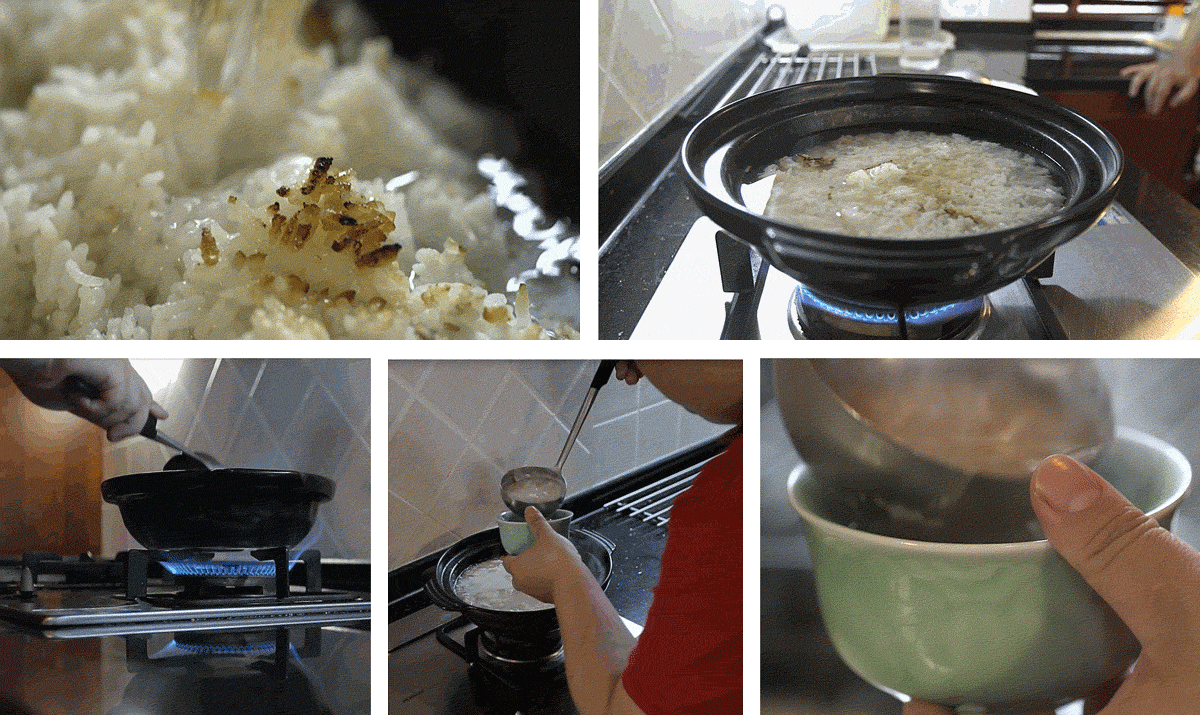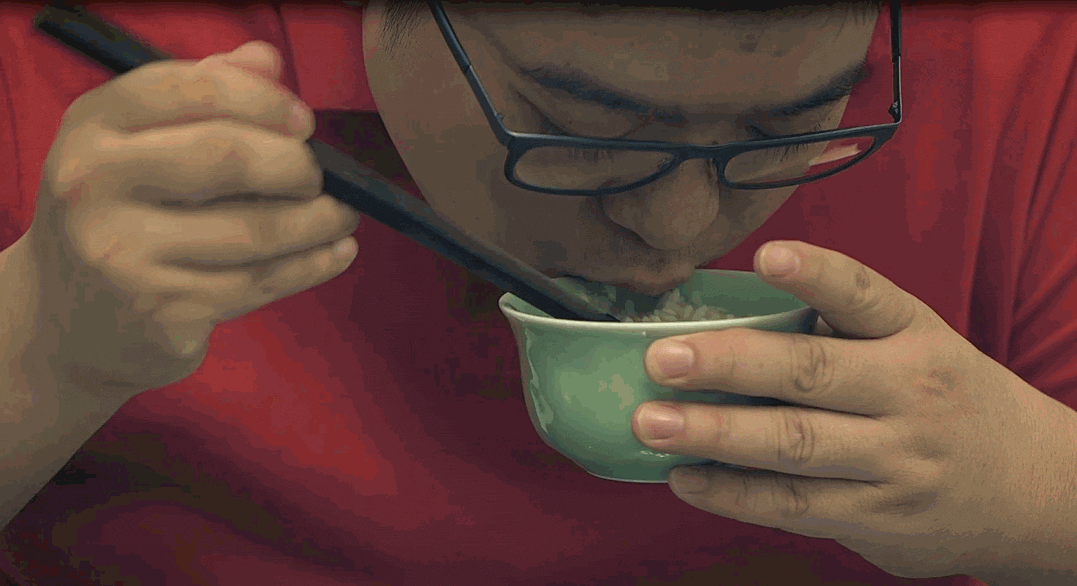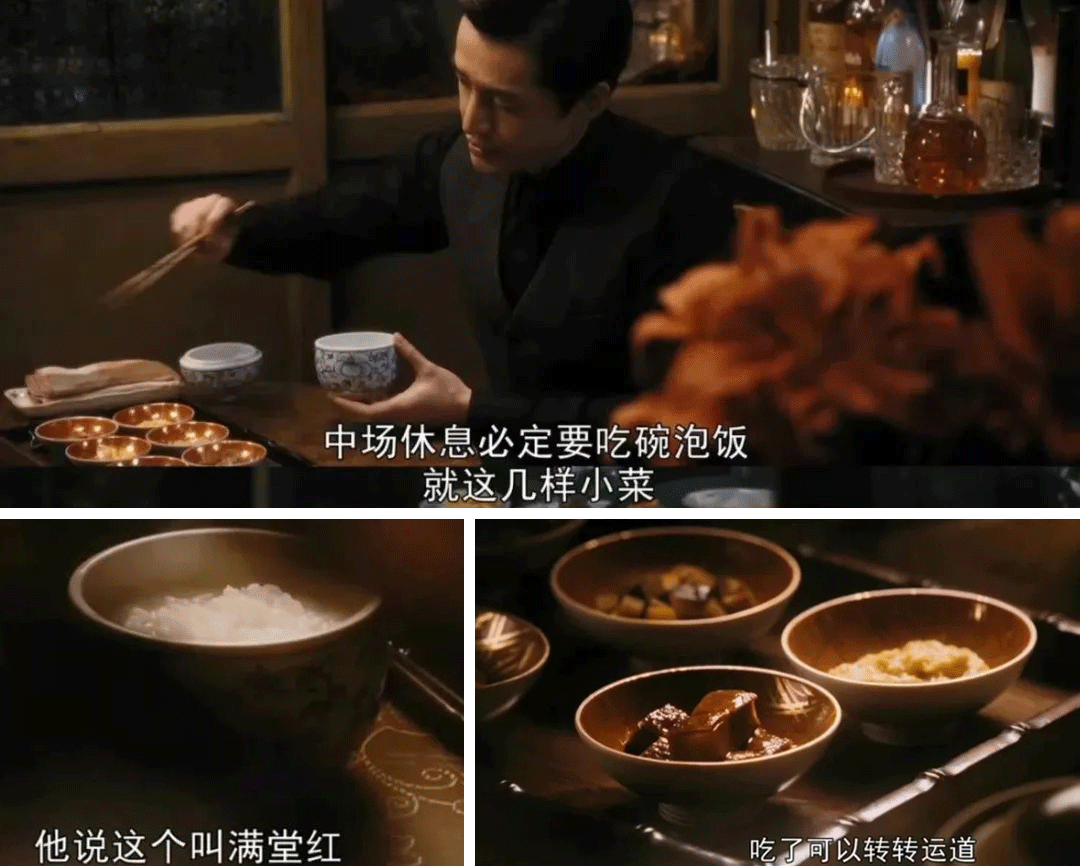
Rice Soup: A Splash of Shanghai Culture
People living in Shanghai are blessed each morning with a plethora of breakfast options. Yet, the best option might just be the simplest: rice soup.
In the 1950s and ’60s, almost every working-class family in the city would start their day by placing leftover rice in a pot and boiling it in water or a light broth. Once ready, the rice soup would be served with small side dishes, forming a hearty meal to stop the stomach from rumbling until lunchtime.
“Rice soup is well-suited to the fast pace of life in industrial and commercial cities,” says historian Cheng Zai. In the 1990s, he interviewed textile workers in Shanghai’s Putuo and Yangpu districts about their physically demanding jobs and strict working hours. “Shanghai people like routine and value efficiency, it’s how they are honed,” he says.
However, rice soup — different to rice porridge, or congee, which is made with fresh rice — has long been more than just a breakfast for laborers. The dish carries cultural significance and evokes strong and sometimes complex feelings among different sections of Shanghai society, not least as it was often seen as the “food of the impoverished.”
Zhang Yiwei, a writer born in the 1980s, points to the novel “The Song of Everlasting Regret” by Wang Anyi, in which the protagonist Wang Qiyao eats rice soup on two occasions: once with yellow mud snails and later with clams. “The kitchen, where Wang eats his rice soup, is relatively private. The kitchen is messy and truly personal, unlike the living room, which is warm, clean, and intended for display,” Zhang says.

Ma Shanglong, a cultural scholar from Shanghai, can relate. Born in 1956, he has eaten rice soup since he was a child, and says “glamorous” is not the word he’d use to describe his memories of it. “You eat rice soup standing up, in the kitchen, or on the balcony. It’s a messy business — something you do in a hurry,” he says.
Ma’s family of seven lived in the upper corner of Xiafei Villa on Huaihai Road, the so-called “shangzhijiao” in Shanghai dialect, a superior residential area. His father earned 150 yuan a month managing a printing factory founded by Ma’s grandfather. In the 1960s and ’70s, their standard of living was reasonably good, but money was still tight for such a large family.
When he and his siblings arrived for breakfast in the morning, they would ladle out the rice soup their mother had prepared. The early bird enjoyed a helping of thick rice, while latecomers were usually left with only soup. The last scoops also often included burnt grains from the bottom of the pot.
No rice soup would be complete without small side dishes, though. These could be homemade or bought at the store, such as pieces of pickled tofu or shredded pickled red cabbage, which was sold by the jin, equal to half a kilogram.
Ma’s family usually bought their pickled vegetables from a specialty food store near the junction of Yandang Road and Huaihai Road. One day, his mother sent him to buy pickled red cabbage, but instead, the saleswoman talked him into buying peppers in shrimp oil sauce for 0.4 yuan. When he arrived home, his mother’s face sank. “Half a kilogram of pickled red cabbage costs 0.4 yuan and can sustain us for a whole week. These peppers aren’t even enough for one day,” he recalls her saying.
Ma was stunned. It was the late 1960s and his family was going through a difficult time. His father had developed hepatitis and was unable to work, so the family was relying on the salaries his mother and sister made from working at a sweater factory. Ma grit his teeth and returned to the store. He made up an excuse that his mother didn’t like the taste of the peppers and exchanged them for pickled red cabbage. “Looking back now, the saleswoman must have understood, but she still let me return them. Things were simpler in those days,” he says.

People who ate rice soup for breakfast back then were often living hand to mouth. Many Shanghai families were large and operated on a conventional sense of order. Ma referred to the state of society then as “poor, tedious, and ordered.”
For example, he says, when breakfast was finished, each person would wash their bowl and put it away in the order in which they finished. At night, their parents would know instantly who had washed up properly by checking the bowls. “Our generation was very self-reliant and didn’t feel that housework was solely the responsibility of our parents,” he says.
Home alone
Cheng Zai, who was born in 1953, had a similar experience. Growing up, he was often left alone with his two siblings, as his cadre parents would be sent out of town for various training programs. They would divide up the household responsibilities, such as budgeting, buying food, and cooking. What made them happiest, though, was being able to cook and eat rice soup every day.
“We had a special recipe,” Cheng recalls. First, they would boil small shrimps and then use this water to cook the rice. As it simmered, they would add vegetables to create a robust breakfast. Whenever their parents were away, leaving them unsupervised, the three children would spend all day cooking rice soup, he says. “We were too lazy to watch the rice cook. We also couldn’t really judge how much there was — there’d always be too much.”
Over time, the novelty of looking after themselves gradually wore off, and Cheng says they were frequently fed up. “We had to prepare everything ourselves,” he explains. “We couldn’t play — we had to go home to cook. After eating, we’d have to think about buying vegetables for the next day. Since there’d also be lots of people at the store, we had to get up at 5 or 6 a.m. to get in line.”
When he visited his classmates’ homes, he would see the quality of the meals their parents prepared, reminding him of his “special” homelife. Every bowl of rice soup that Cheng ate began to be tinged with sadness.
For Peng Shengjie, a child of the 1980s, rice soup evokes different emotions. When he was young, Peng hated the dish. “Why was it so bad?” he says. “At that time, the pans we used were made of aluminum and there’d always be a burnt layer stuck to the bottom. When you put in some water and heated the pan, the burnt bits would come off and stick to the rice. They tasted really bitter.”

By contrast, Peng’s father has always been a fan of this traditional breakfast and regularly eats it with sweet garlic, shredded ginger, and pickled cucumber from his native Nanhui (now merged into Pudong area). “Eating rice soup is embedded in the DNA of the older generation,” he says.
Seemingly eager to discuss a long-buried memory, Peng suddenly asks, “Have you ever had rice soup with milk?” He explains that his mother had a unique twist on the dish, which involved boiling milk with a thick skin, then adding the leftover rice and stirring. This way meant that the dish was filling and nutritious, and it saved a lot of time.
In the 1990s, new concepts regarding nutrition began to take root, with milk becoming a popular foodstuff in many households. However, drinking milk after eating rice soup would leave some with an upset stomach. So, instead, people in Shanghai began combining them to create “milk rice soup,” which some saw as an efficient, value-for-money solution.
In time, Peng’s tastes gradually grew to emulate many of his Shanghai brethren. About a decade ago, he went to study hotel management in Lucerne, Switzerland. There, he worked in various Chinese and Western restaurants, only discovering his “Shanghai stomach” after being surrounded by foreign food cultures. “Rice soup is imprinted on my stomach. I grew tired of Western food — it upset my stomach,” he says.
Nowadays, Peng only has time to make rice soup on the weekends, largely because, just like the version of the dish that appears in the recent hit TV series “Blossoms Shanghai,” he has a particular way of enjoying it: with all the sides. Although cooking rice soup doesn’t take long, the side dishes take some effort to prepare: pickled tofu, marinated chicken with shrimp oil jelly, pickled cucumber, salted egg, preserved egg, yellow mud snails, pickled mustard greens, river snails, radish heads, and peanuts. “My son likes eggs, so I’ll always fry one for him,” Peng says, adding that it’s the small dishes that accompany Shanghai rice soup that make it so special.

These small side dishes can often also reveal where the person eating them is from. It’s said that people from southern Jiangsu province prefer light dishes, enjoying the soup with sweet pickled cucumber. People from Ningbo and Shaoxing, in Zhejiang province, prefer salty snacks. Meanwhile, people from Gaoyou in northern Jiangsu eat the soup with salted duck eggs, while the people of Anhui province like theirs to be spicy. The coastal fishermen in Haining, northern Zhejiang, enjoy stronger-tasting dishes, with preserved mustard root being especially popular.
But which side dish reigns supreme? Shanghai writer Shen Jialu awards the title to pickled vegetables. “When speaking about experience, we always say, ‘I’ve eaten more salt than you’ve had rice.’ In terms of rice soup, you can’t say you understand Shanghai if you haven’t eaten more than 10 kinds of pickled vegetables,” he says.
Rice soup is simple but special, acting as both a breakfast and a window into a family’s background and Shanghai’s rich cultural identity.
No wonder the dish has endured to this day.
Reported by Zhou Yiming.
A version of this article originally appeared in SHerLife. It has been translated and edited for brevity and clarity, and is republished here with permission.
Translator:David Ball; editors: Xue Ni and Hao Qibao.
(Header image: Gu Tingting/SHerLife, reedited by Sixth Tone)














